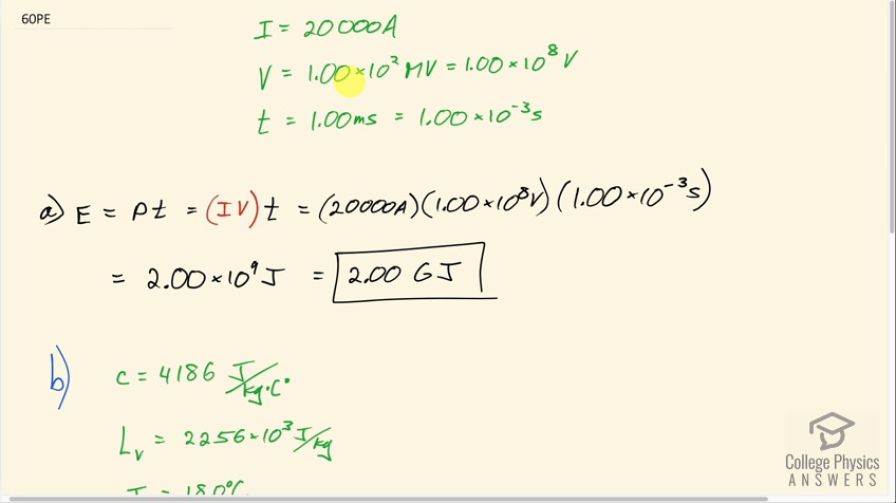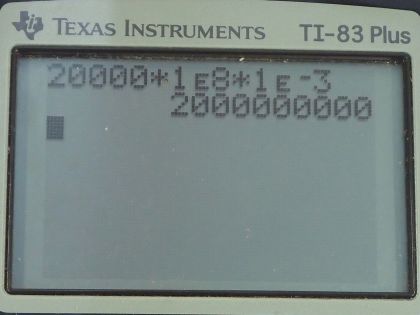Question
(a) What energy is dissipated by a lightning bolt having a 20,000-A current, a voltage of , and a length of 1.00 ms? (b) What mass of tree sap could be raised from to its boiling point and then evaporated by this energy, assuming sap has the same thermal characteristics as water?
Final Answer
Solution video
OpenStax College Physics for AP® Courses, Chapter 20, Problem 60 (Problems & Exercises)

vote with a rating of
votes with an average rating of
.
Calculator Screenshots
Video Transcript
This is College Physics Answers with Shaun Dychko. How much energy is in a lightning bolt that carries a current of 20000 amps at a voltage of 1.00 times 10 to the 8 megavolts? Now the prefix 'mega' means multiply by 10 to the 6 so 10 to the 6 times 10 to the 2 is 10 to the 8 volts here and the lightning bolt lasts for 1 millisecond, which is 1.00 times 10 to the minus 3 seconds. So the energy it's dissipating is going to be the power of the lightning bolt multiplied by the time it lasts and power is current times voltage so we substitute IV in place of P and then we multiply the 20000 amps by 1.00 times 10 to the 8 volts by 1.00 times 10 to the minus 3 seconds to get 2.00 gigajoules of energy. And part (b) says suppose we have some tree sap that has the same specific heat as water, how much tree sap could be raised in temperature from 18.0 degrees Celsius to 100.0 degrees Celsius and then vaporized? And so we need to know the latent heat of vaporization for water, which is 2256 times 10 to the 3 joules per kilogram and we found these pieces of data from tables [14.2]—this is in chapter 14— for water its latent heat of vaporization and then the specific heat of water is 4186 joules per kilogram per Celsius degree—that's table [14.1]. So the total amount of heat that's going to be absorbed by the sap will be the mass of sap times its specific heat times the change in temperature plus the energy that goes into changing its phase from liquid into vapor so its mass times latent heat of vaporization, we can factor out the mass and so we have m times cΔT plus L v and then divide both sides by that bracket cΔT plus L v and then divide the Q by cΔT plus L v. So we have mass then is the energy absorbed divided by cΔT plus L v. So that's 2.00 gigajoules, which is 2.00 times 10 to the 9 joules of energy absorbed from the lightning divided by 4186 joules per kilogram per Celsius degree times the change in temperature which is the final temperature— 100.0 degrees Celsius, which is the boiling point of water— minus the initial temperature— of 18.0 degrees Celsius— plus 2256 times 10 to the 3 joules per kilogram— latent heat of vaporization— and we get 769 kilograms of sap could be vaporized by this 1.00 millisecond lightning bolt.

